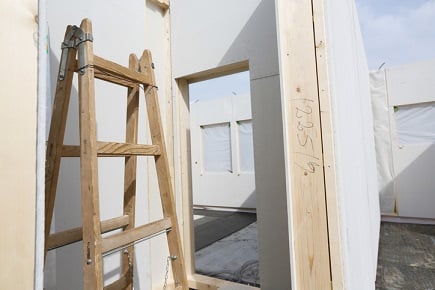Could a manufactured home be right for your clients?

Manufactured housing has gotten a bit of a bad reputation over the years. It’s often looked down upon in favor of site-built homes (new or resale), and as such, are overlooked by many homebuyers.
Originators who know otherwise, however, can really capitalize on that to reach more borrowers.
As of 2018, 22 million people live in manufactured homes, which represents more than 9% of new single-family home starts, according to the Manufactured Housing Institute. This could be a lucrative target for originators. Andy Allen, product specialist at American Financial Resources, Inc., said that originators don’t realize their potential in the grand scheme of the housing market, and the learning curve for manufactured home loans isn’t steep at all.
“People get scared, because they don’t understand all those little quirks, but you could probably learn them in a week and there’s a whole new segment of the market that you have outlet to do other loans,” he said.
Manufactured housingis also on the rise: in 2013, there were just over 60,000 manufactured home shipments, and that number jumped to almost 93,000 in 2017. There are several reasons why, according to Allen. Manufactured homes are made in a factory, which means that they’re made in a controlled environment. Between automation and machinery, manufactured home construction is much more exact when it comes to materials, which reduces both cost and waste.
“There’s a huge amount of waste that goes on when you’re doing things on site because they’re cutting to fit whatever the specs are. But that’s not done in a factory, where literally, they’re only using— at least, as much as they can—only the materials that are necessary,” Allen said, which makes the homes more environmentally friendly. “Producing less waste also means a less expensive home, too, because you’re buying less material to build that home. So it works upon itself as to why it’s green in that manner, and it’s more air tight in many cases.”
As the costs for materials and labor rise and combine with a lower inventory of existing homes for sale and builders that can’t keep up with demand, home prices have risen in many areas of the country. Manufactured homes are a solution to the affordability issue in a good portion of the country; with an average sales price of $70,000, they’re efficient and much more affordable than other types of housing.
There are, however, some misconceptions about manufactured housing that abound among the general public and some originators as well. The most common misconceptions are that they’re mobile homes and trailers, that they’re a niche product, or that they’re cookie-cutter out of the box. In reality, none of those are true. Like modular housing, they’re customizable; the only limits are related to dimensions due to shipping feasibility. The rate of appreciation for manufactured homes is also on par with other types of housing.
“They’ve gotten better and better and better over the years. Manufactured homes used to have a negative connotation and now, if you look at some, if you Google image some manufactured homes, they’re nice. It’s not what you’re thinking with the trailer that’s sitting on a lot somewhere. I’ve seen them with vaulted ceilings and granite countertops, they look great,” Allen said.
There are limitations, however. Manufactured homes are more popular in Middle America and the Sun Belt, simply because it’s logistically easier for them to exist there. There’s more space for factories to build them, and there are wider roads with fewer people driving on them for hassle-free shipping.
For originators who operate in those areas, or who are either nationwide lenders or work with those who are, it’s worth taking a bit of time to investigate the possibility of manufactured homes.
“Loan officers, we’re creatures of habit. We don’t like the unknown, we don’t want to possibly trip over a little pitfall here or there. But you just learn a couple of the small little items that are specific to manufactured housing. You’re pigeon-holing yourself by not doing those,” Allen said. “There’s other products such as your 203ks, which have a little bit more of a learning curve than that, and then you go into the whole one-time close, which is probably one of the harder ones, and the learning curves is much more. But just manufactured housing in general, there really isn’t that much of a learning curve at all.”
Okay, so maybe ‘miracle’ is a bit much. But there are a lot of benefits of manufactured housing, and the more originators know about them, the more people they can help become homeowners.



